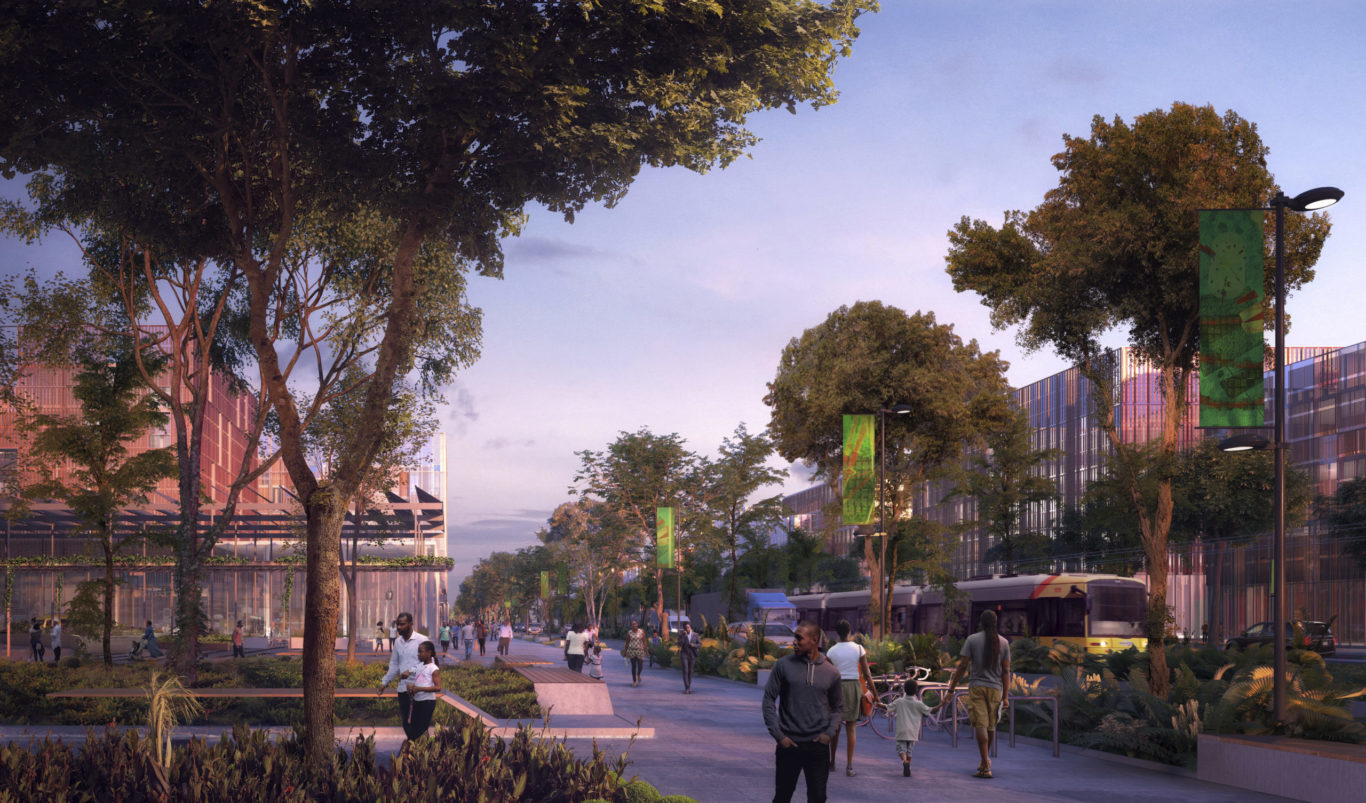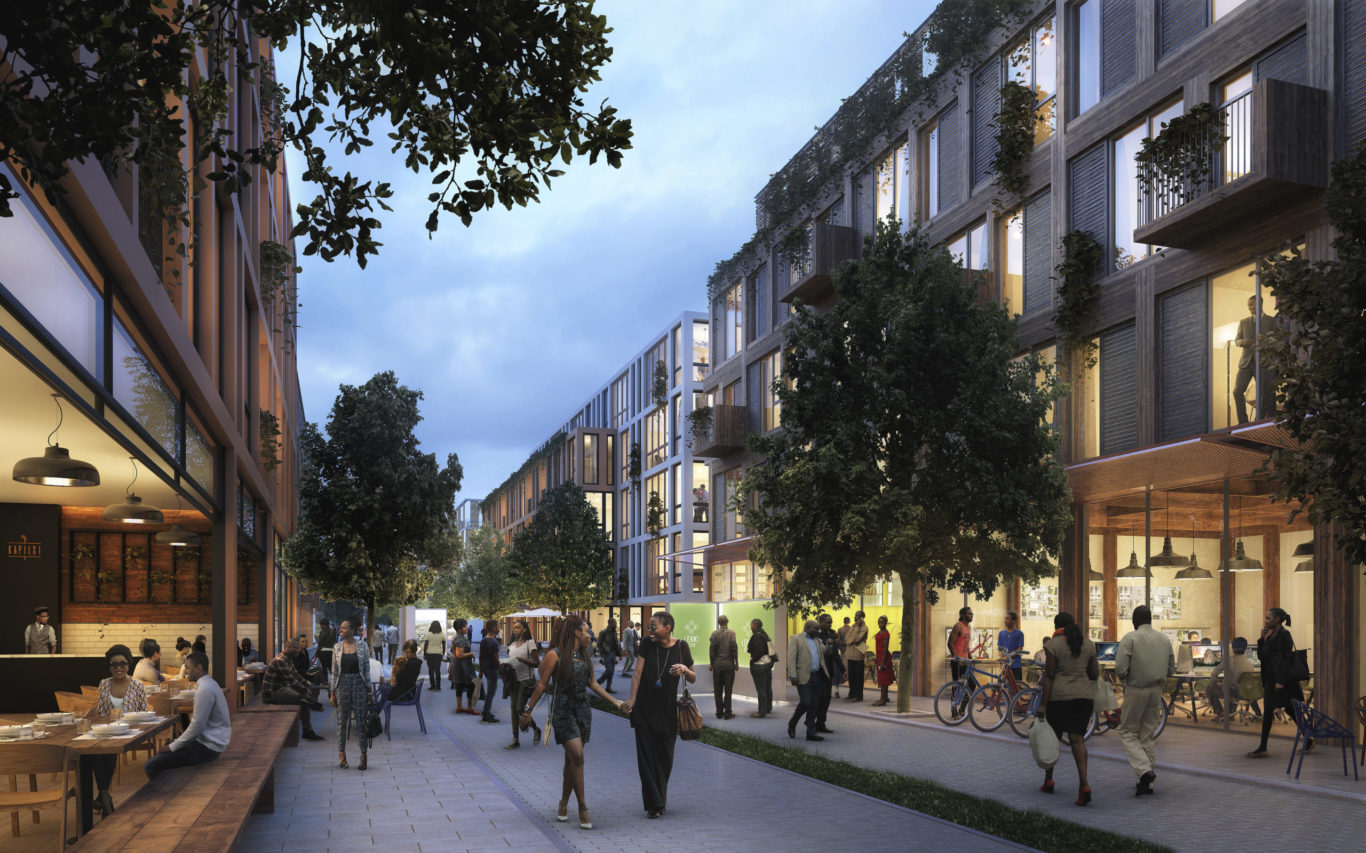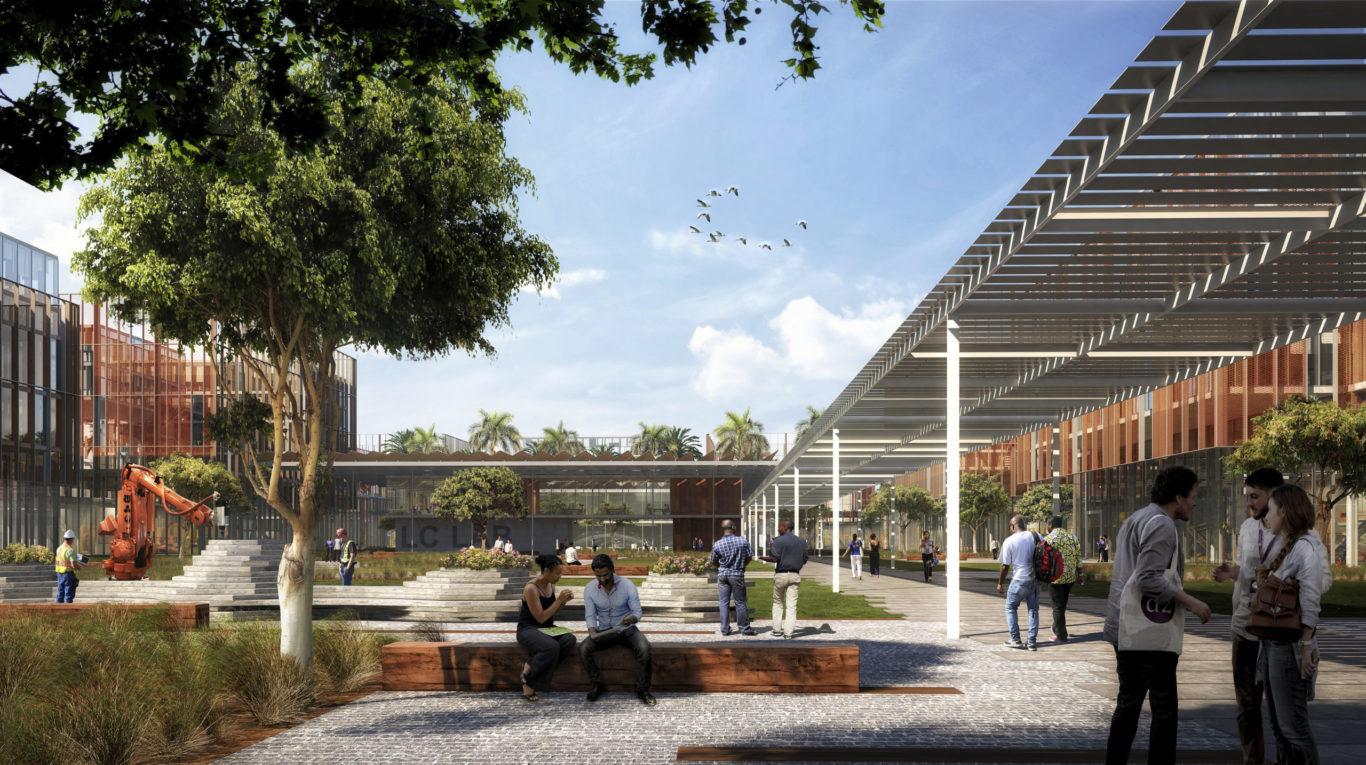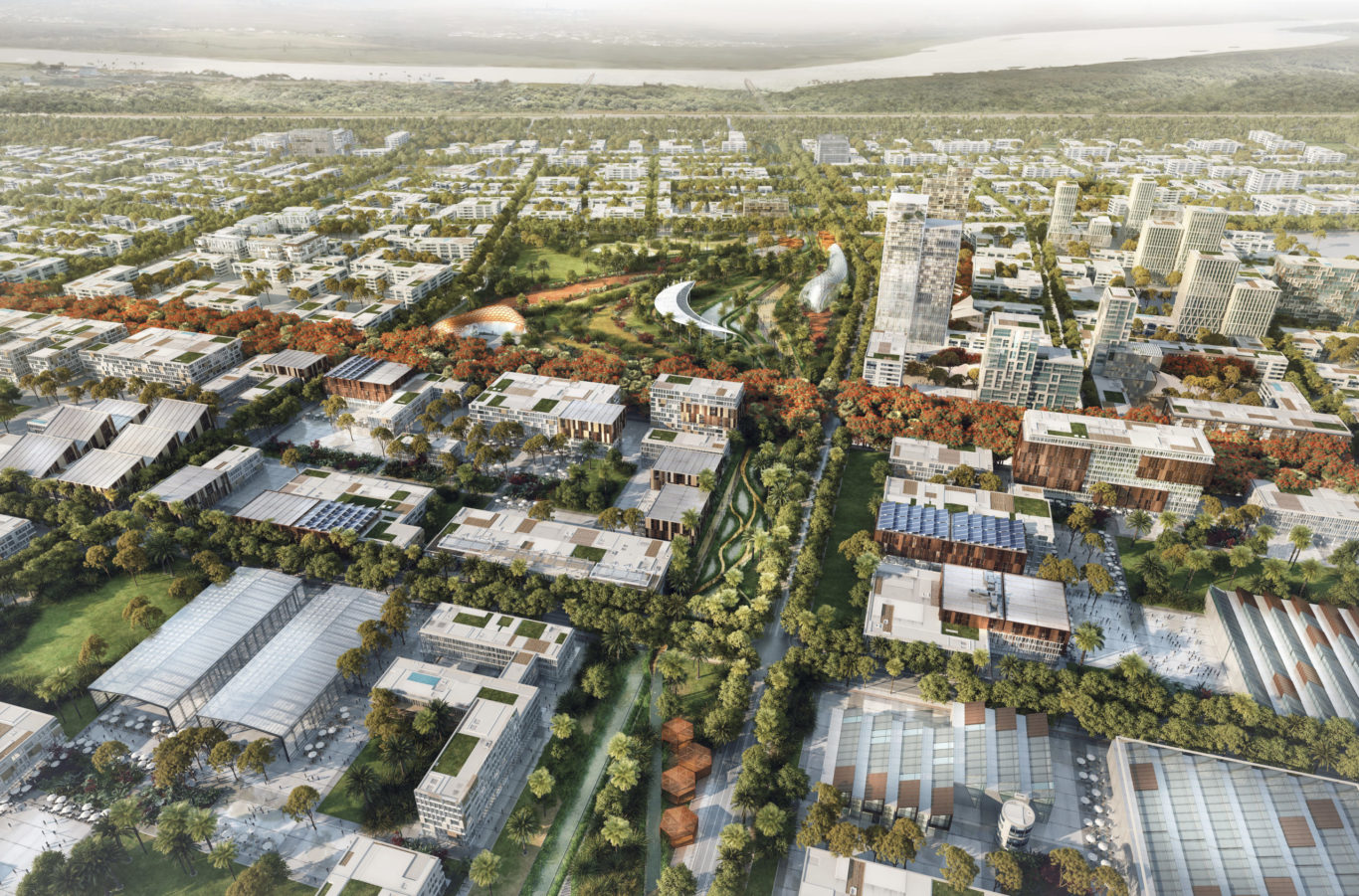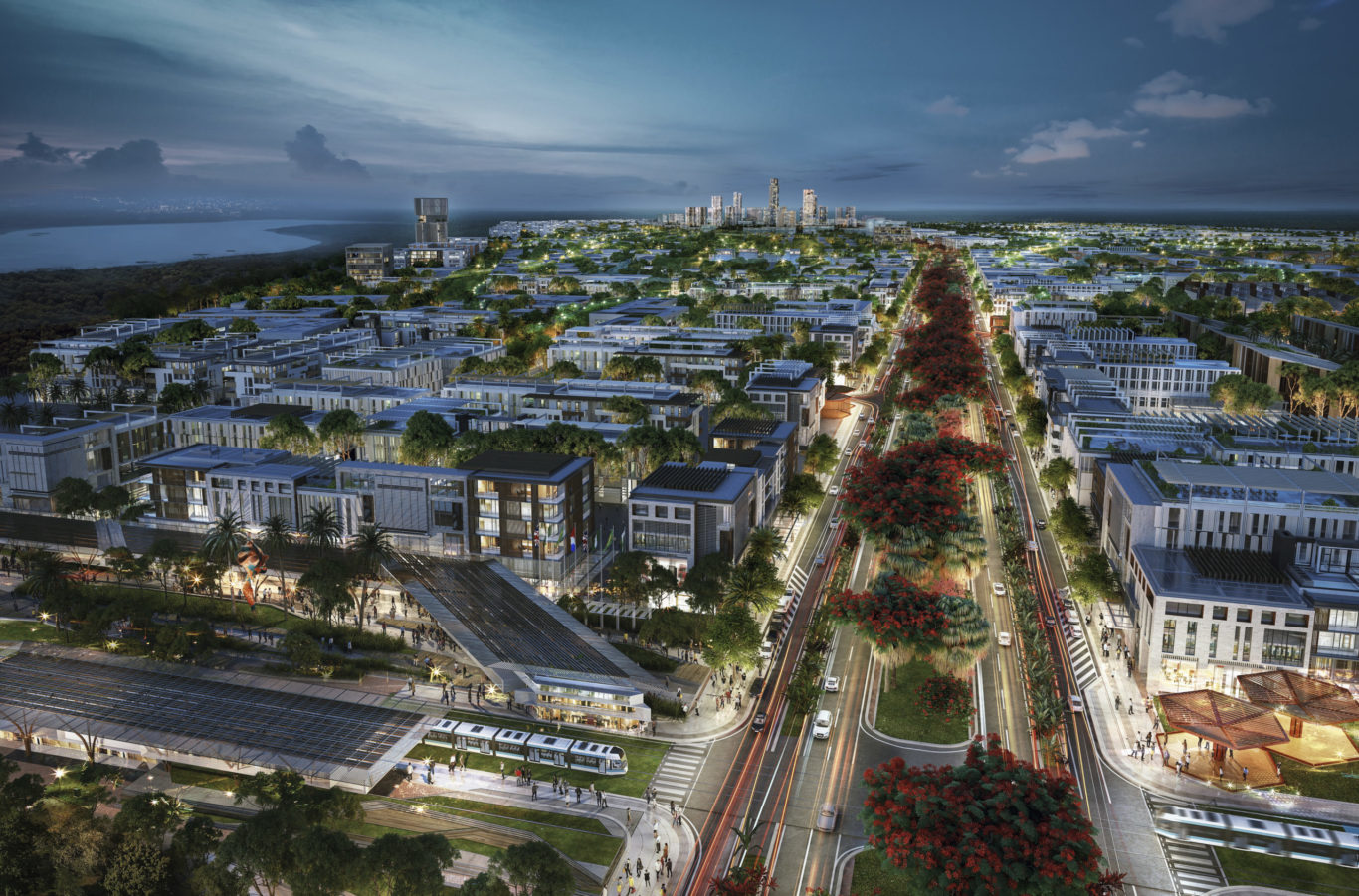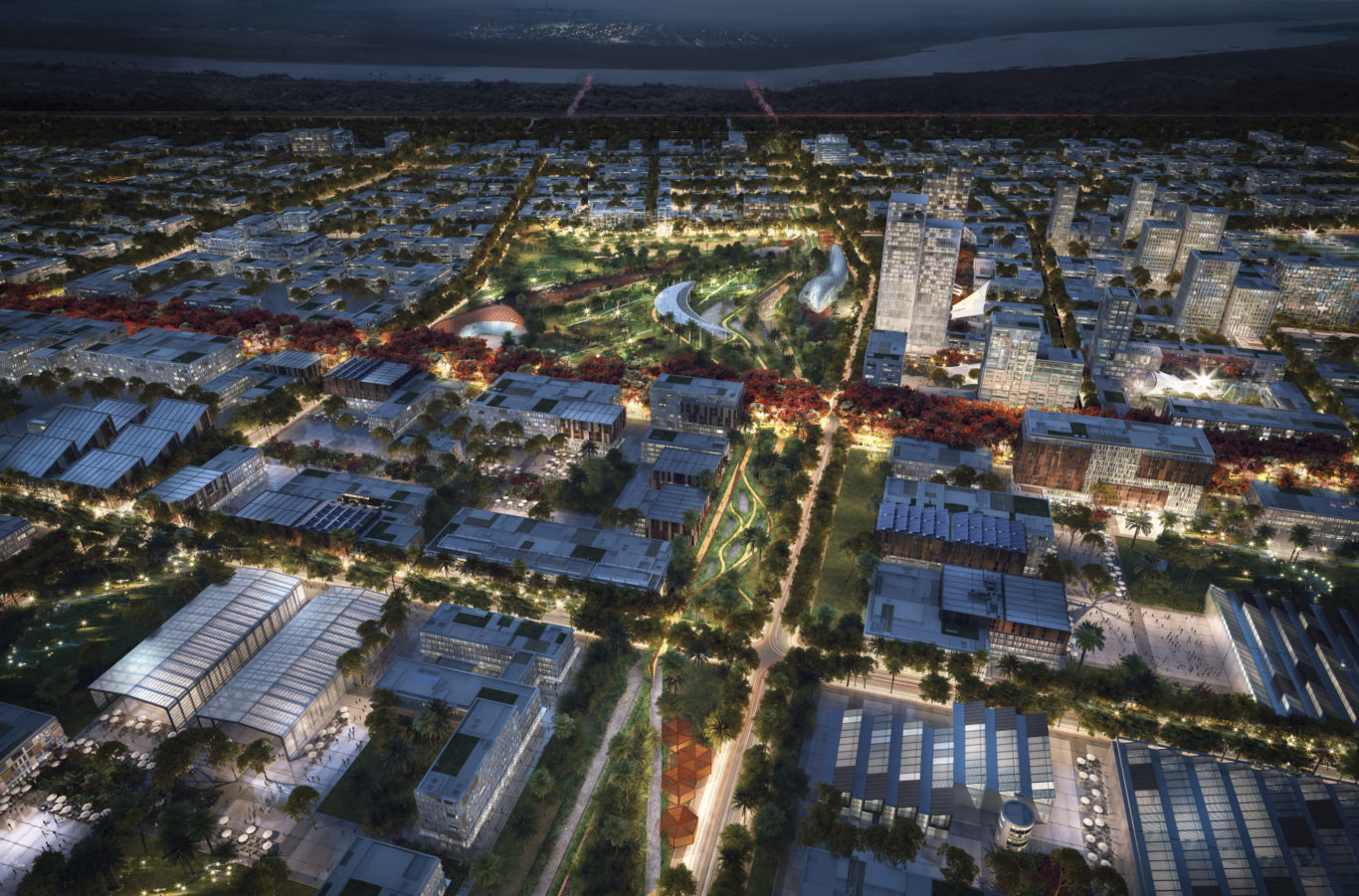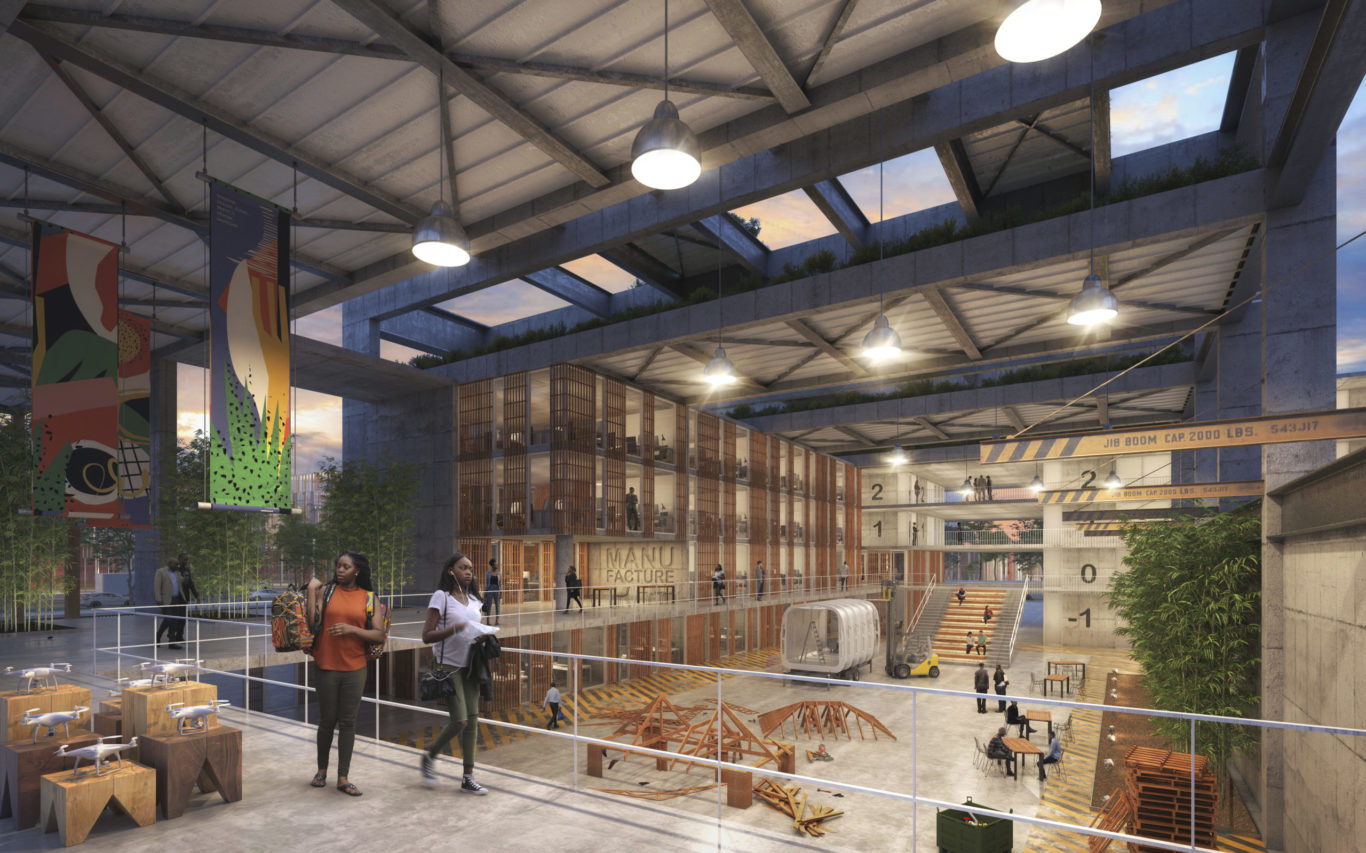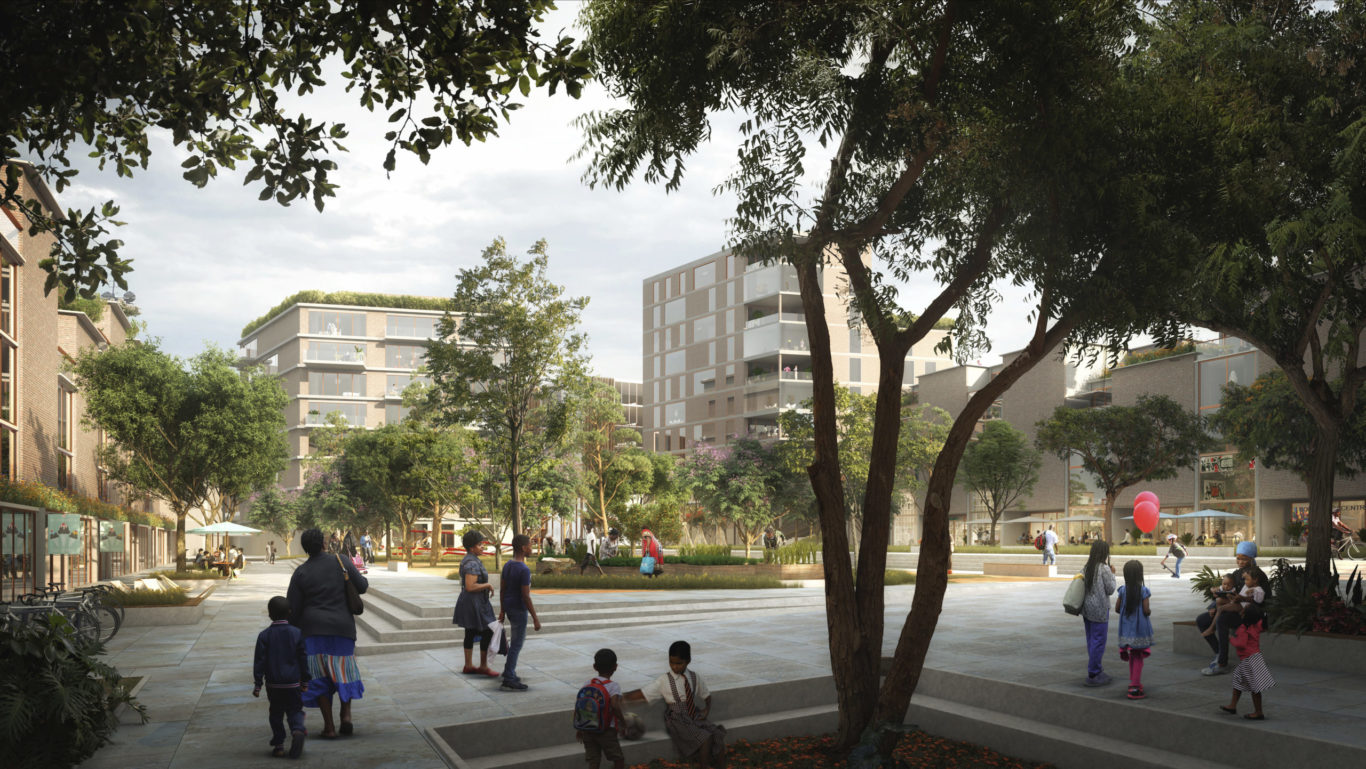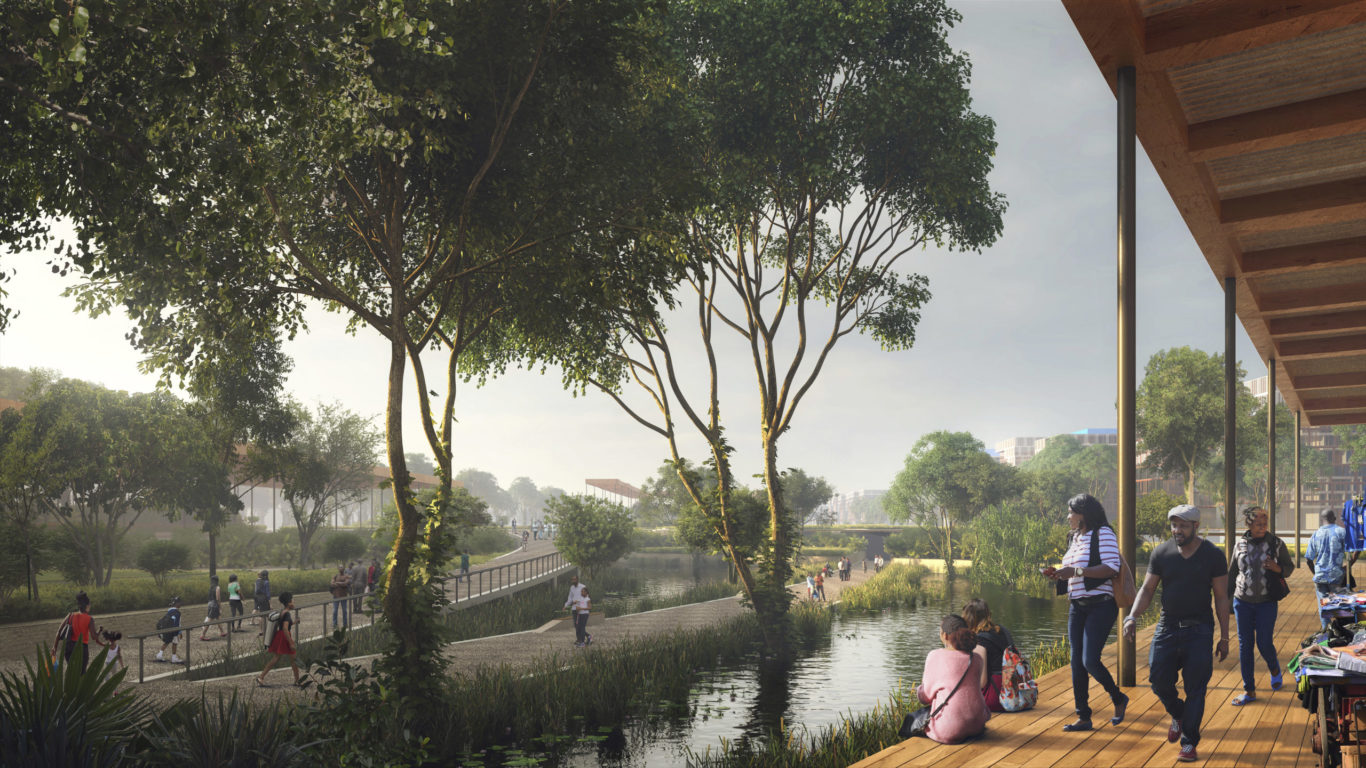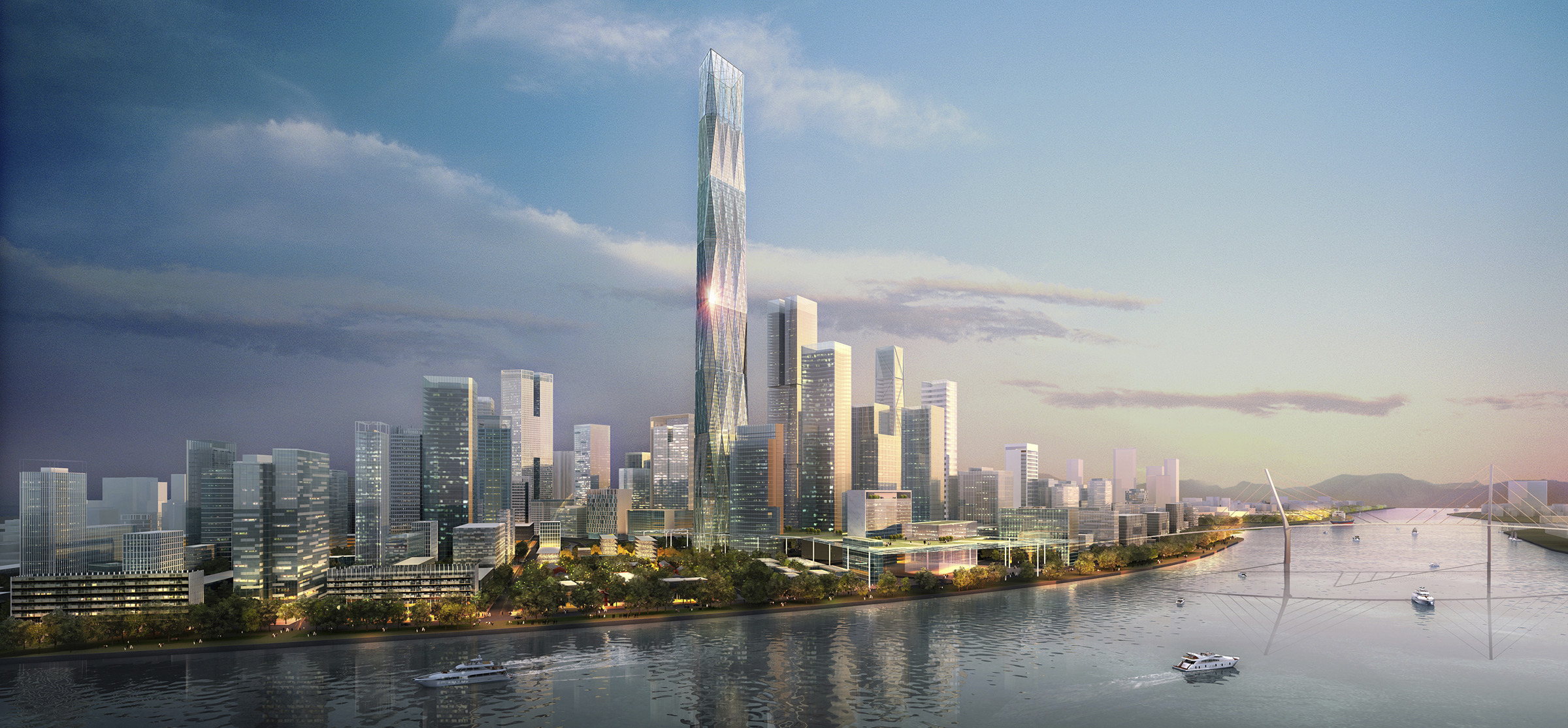Alárò City helps strengthen Lagos’position as the economic and cultural hub for West Africa by creating a new mixed-use model community—a place for people to work, make, live, and learn. Located 60 kilometers east of Lagos, the 1,000-hectare site is part of the wider 16,000-hectare Lekki Free Trade Zone, which aims to become an international trade gateway with a new seaport and airport.
By focusing first on natural systems, SOM designed a master plan that protects and enhances the unique conditions of the site—comprising a lush forest between two lagoons—while enabling longterm resiliency for the future city. The plan is structured around six greenways, aligned north-to-south with the prevailing winds and existing topography, and spaced 800 meters apart to bring all residents and workers within five-minute walk of open space. The greenways are also designed to convey stormwater into the lagoon to the north.
SOM planned transport infrastructure to support local economic activity and to allow for higher density, mixed-use development. Larger industrial and logistical development plots are in the south, adjacent to an inter-district transport corridor, while smaller plots for residential, mixed-use, and commercial development are located to the north, with views to the lagoon. A main boulevard connects the commercial, enterprise, and educational areas on the north with the research and the industrial areas on the south.
A vibrant city core will become the civic heart of the Free Trade Zone—a focal point for innovation and collaboration, as well as a destination for leisure and entertainment. The development is complemented with shaded, pedestrian-friendly streets and strong connections to public transit. A clearly defined network of urban plazas will link to a 14-hectare Central Park, designed to support a variety of events and bolster the region’s ambition to become a thriving center of trade and commerce.
